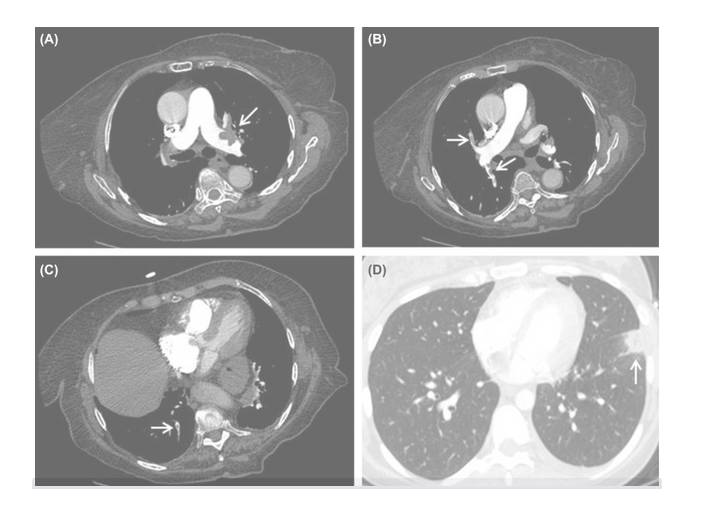If every breath is strained and painful, it could be a serious and potentially life-threatening condition. A pulmonary embolism (PE) is caused by an artery blockage in the lung. It is time consuming to confirm a PE and prone to overdiagnosis. Machine learning could help to more accurately identify PE cases, which would make management and treatment more effective for patients.
Currently, CT pulmonary angiography (CTPA), is the most common type of medical imaging to evaluate patients with suspected PE. These CT scans consist of hundreds of images that require detailed review to identify clots within the pulmonary arteries. As the use of imaging continues to grow, constraints of radiologists’ time may contribute to delayed diagnosis.

Figure: (A–C) Computed tomographic angiography of an 81-year-old female with acute pulmonary embolism. (A) Nonobstructive eccentric filling defect (arrow) in the left main pulmonary artery, extending to the left upper lobe artery, forming acute angles with the vessel wall typical of acute embolism. (B) Partial filling defects surrounded by contrast material (“railway track” sign) in segmental arteries to right middle lobe and right lower lobe (arrows) and in (C) subsegmental posterior basal pulmonary arteries (arrow). (D) Pulmonary infarction in the left lower lobe of a 22-year-old female who presented with pleuritic chest pain following a trans-Atlantic flight; she was an active smoker on oral contraceptives and was later found to be heterozygous for both prothrombin and factor V Leiden mutations. A wedge-shaped peripheral consolidation (arrow) shows central foci of hypoattenuation. An embolus was demonstrated on adjacent computed tomography sections.
Courtesy of Dr. Osnat Moreh-Rahav, Department of Radiology, Rabin Medical Center, Israel.
In this project, the goal was to detect and classify PE cases in 1TB of chest CTPA image. In particular, we use chest CTPA images (grouped together as studies) and the data science skills to enable more accurate identification of PE. It will help reduce human delays and errors in detection and treatment.